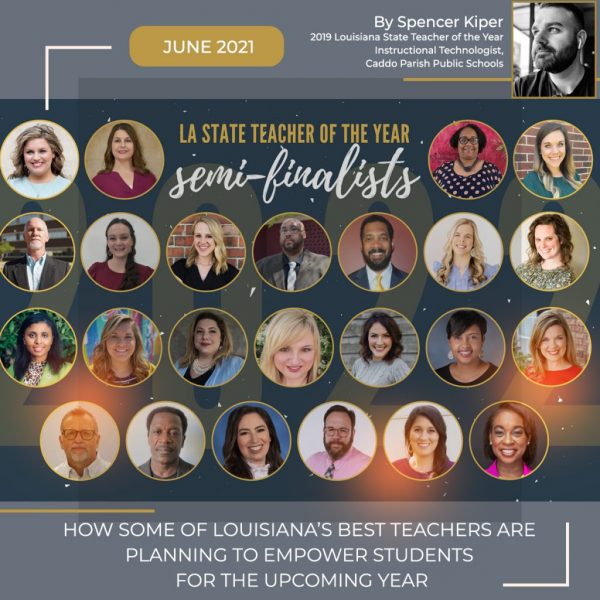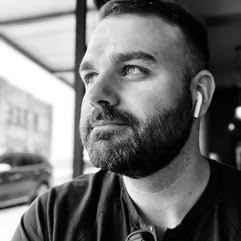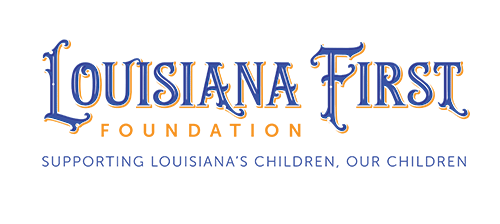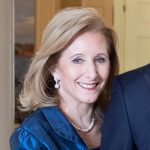Teach MAM
Teach MAM: An Exciting Partnership to Strengthen Arts Education Across Louisiana

TEACH MAM
How Some of Louisiana’s Best Teachers Are Planning to Empower Students for the Upcoming Year
By Spencer Kiper
2019 Louisiana State Teacher of the Year
Instructional Technologist, Caddo Parish Public Schools
A year ago, this month, every educator in our state was spending their summer break mentally preparing for an unknown and unpredictable school year ahead. Having come off of the heels of a school year ended abruptly by COVID, many were left wondering how different the upcoming school year would be – what would it look like, what precautions would be necessary, and how would we as educators provide the same level of instructional and emotional support to our students in a classroom setting that was so different than what so many of us had experienced? Despite incredibly challenging and shifting conditions of the past school year, Louisiana educators triumphed. Our educators found new, innovative ways to reach students. Many adopted skills and practices to provide the support we know as educators that students need in order to be academically, emotionally, and socially successful.
This summer, teachers are now looking retrospectively at the year that just concluded. While most are likely ready to close the book on this chapter of their careers, it is important to pause this summer and think about the work that our teachers were able to accomplish with their students, despite the incredibly difficult circumstances we were faced with when the year began. When asked about this, some of Louisiana’s best teachers, the 2022 State Teacher of the Year state-level honorees, had the following to say about the innovative practices that they implemented that helped them and their students overcome the challenges from this past school year.
|
Lorie Miller, |
“This year, I did weekly well-being check-ins with my students. This helped me to cultivate deep, meaningful relationships with my students. I firmly believe that when students feel seen, heard, and valued they can go above and beyond what is asked of them in the classroom.” |
|
Cicely Jacob, |
“This year in an effort to ensure success for face to face, hybrid, and virtual students, my district used Google Classroom as our teaching platform. The students were not very familiar with Google tools such as Drive, Documents, Gmail, Sheets, and Slides. I stumbled upon Applied Digital Skills, a video-based curriculum, and used it to build skills in using all the tools necessary for assignments. As an added plus, the curriculum was embedded in lessons celebrating things like Black History and Women’s History.” |
|
Steven Brown, |
“I leveraged peer to peer learning/collaboration with every opportunity that arose. Students sharing and hearing, thinking out loud by their peers was critical in the environment dominated by isolation from the pandemic.” |
|
Courtney King, |
“This past year, I taught my students ways to navigate through the emotions they encounter when they attempt to master new and difficult skills. To ensure my methods were rooted in mutual growth and understanding, I learned new skills and pushed myself right alongside them. When days were particularly rough and we all wanted to throw in the towel, I invited them to help me decide what we should do next. Showing my students there is value in struggle and normalizing its place by making them privy to its consistent appearance in my own triumphs and setbacks in the classroom, transformed the learners in my room. They began to feel empowered instead of intimidated. The more my students pushed forward the more they experienced what was on the other side, validating their capabilities and ensuring another willing opponent in a process that no longer felt like a losing game.” |
|
Kayla Joseph, |
“I implemented culturally responsive teaching strategies by facilitating safe and open dialogue to encourage students to feel comfortable to discuss social, emotional and academic topics in my classroom. The goal for this strategy was to create a communal environment where students could embrace and respect diversity and experiences. Over the past year, our nation has been affected by a significant amount of trauma. Real life issues such as health care disparities, racial injustice, increase in gun violence and the hunger and food crisis influenced my decision to implement open discussion because national issues weighed heavily on my students social and emotional well being.” |
|
Indya Pruitt, |
“I used various types of media to drive instruction. I incorporated agriculture into my curriculum for students to have an in-depth, hands on experience. I also sparked curiosity and accessed prior knowledge by introducing more anchor texts.” |
|
Michele Pelissier, |
“Having both nonverbal and verbal students with Autism as well as LEAP and LEAP Connect students, I used a strategy of blended curriculum to help scaffold and differentiate material so that all students would benefit. This, combined with targeted and intentional interventions, helped students relate to the material and make connections that helped all students show significant growth.” |
|
Courtney Martin, |
“This year, I worked hard to overcome ACT test misconceptions and anxiety so that students were fully prepared to test to their highest ability. We spent time going over skills that students did not get to learn due to COVID, and spent time reinforcing skills learned in prior grades. A student is a better test taker when he/she knows what to expect. No surprises!” |
|
Angela Goodly, |
“I implemented weekly Class Council Meetings to build a positive classroom climate, where we could discuss their dreams, fears, academic challenges, and world events. During our meetings, we had candid discussions about the challenges of virtual learning, how to set SMART goals, social and racial injustice, the pandemic, and their power to change the world around them.” |
|
Angela Leach, |
“Upon entering this new world of teaching virtually, I amended strategies constantly to try to find the best method to teach, accommodate special needs, and ensure success. This vacillated between creating videos in advance for instruction so that it could be reviewed as many times as needed, doing live (virtual) demonstrations, taking pictures of step by step progress, and giving them several different project options with videos included for self-pacing. In-person instruction simply demanded changes in pacing and daily schedules to accommodate for cleaning measures of all materials between each class.” |
|
Brian Gough, St. |
“While teaching during this year of the pandemic, I included as many virtual outside connections as possible into my PBL projects. We networked with past students who now work in the technology and design professions who acted as mentors, brought in university professors and students to lead workshops, and connected with other K-12 students around the globe through Link Online Learners to discuss how life during a pandemic was in other countries and to act as sounding boards when we needed feedback on products we were making in class. Now that the word has been opened up to my students, this concept will become an important part of my project development in the future.” |
|
Victoria Roussel, |
“I switched over from always beginning with whole class instruction to more of a small group and individual setting. This allowed me to space out my students more but also gave them more of an opportunity to be creative and work with others, even from a distance. “ |
Now, our Louisiana educators look ahead to the upcoming school year. We know that gaps that occurred due to the pandemic will still be issues our educators will have to face in the upcoming school year. The innovative practices and mindsets will continue as our teachers continue to address these gaps head-on. Our teachers have never deserved a summer break more than this one. With rest on the schedule, many of our educators also plan to use this summer to continue to innovate how they plan to impact the lives of their students in the upcoming school year. Here’s what a few of our teachers plan to do to empower their students this fall.
|
Rhea Blanchard, |
“As I embark on a new grade level in a different school, I plan to empower my high school students by continuing to allow them to reflect and give feedback on activities and assessments as well as classroom procedures. If we listen to them, we see they have great ideas from a fresh perspective!” |
|
Kaitlyn Richard, |
“As the upcoming school year arrives, I plan to take everything that I have learned from the last school year and use it as my driving force for next year! Due to the large amount of time missed this year, I have focused on providing my students with rich and engaging digital learning opportunities as well as a strong literacy foundation. By focusing on these areas, my students have felt more success and empowerment than ever before; therefore, I plan to continue to create and deliver strong academic instruction, so that all of my students can feel this achievement for many years to come.” |
|
Carrie Loridans, |
“Next year, I plan to empower students to take control of their linguistic growth through a better understanding of how skill attainment/performance directly connects to their grade. I intend to help my students focus on their proficiency level, on how well they can communicate in French, setting goals for their personal growth instead of focusing on letter grades. After AVANT assessment training this past summer, I gained a deeper understanding of linguistic proficiency levels, and I’m eager to use that knowledge to help my students grow.” |
|
Leah Darden, |
“In the upcoming year, I will empower my students by focusing on building relationships. In a world that’s growing increasingly digital, it’s my concern that students will live in a screen-only setting and neglect building relationships with one another. We will continue to utilize the tools at our disposal but there will be a special attention paid to the social-emotional growth of my students.” |
|
Michelle Lewis, |
“In the upcoming school year, I plan to empower my students by progressively encouraging, equipping, and enhancing their leadership capacity. First, I will begin the school year by getting to know my students individually and working towards building a classroom community that celebrates who they are and how they self-express. Then, I will infuse resources and activities that invite students to hold discourse and dialogue with one another around their work and ways to improve it. Next, students will progressively be given choice and voice in their decision making and be encouraged to utilize their unique skill sets, vision, and talents to show mastery of objectives. Also, students will begin to see themselves as community partners and problem solvers. Through data, case studies, articles, and mini-documentaries, students will read, become aware, analyze and connect what they are learning in science to ways in which they can actively use their knowledge to create more equitable solutions to local and global issues. Finally, students will take part in shared leadership opportunities, where they take on the role of “teachers” and take ownership in encouraging their peers and providing timely academic feedback. I recognize that each student traverses on their learning journey at different times and in different ways.” |
|
Jeff Kenimer, |
“This year, I started an after-school tutoring/test corrections program. Next year, I plan to continue the after-school program and implement more hands on activities/labs.” |
|
Annelise Cassar Tedesco, |
“The pandemic has reminded us that each of us has so much material in our own lives from which to create art. I look forward to cultivating a culture of artistic expression and creation from within each student’s own journey. This encouragement combined with a continued study of rigorous academic, artistic material will foster the growth of students and the empowerment of their voices.” |

Spencer Kiper
2019 Louisiana State Teacher of the Year
Instructional Technologist, Caddo Parish Public Schools

